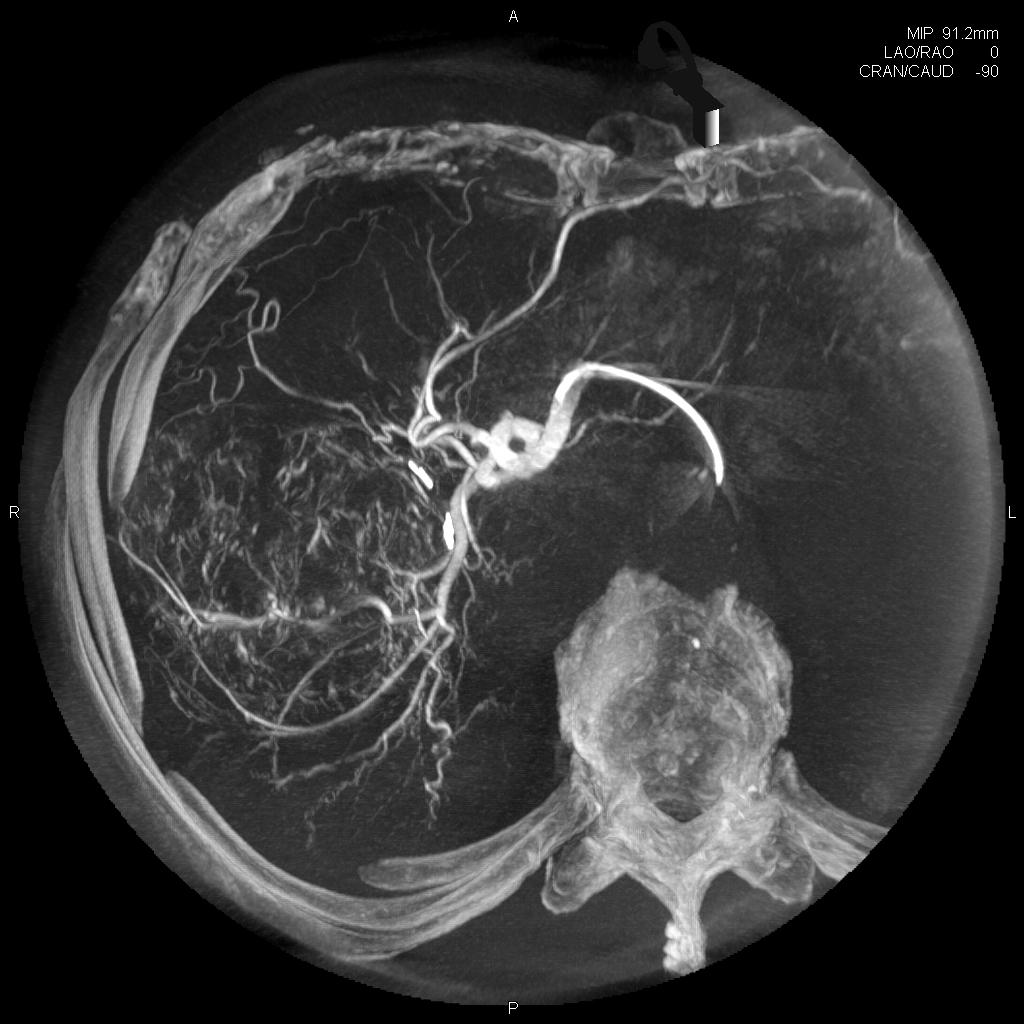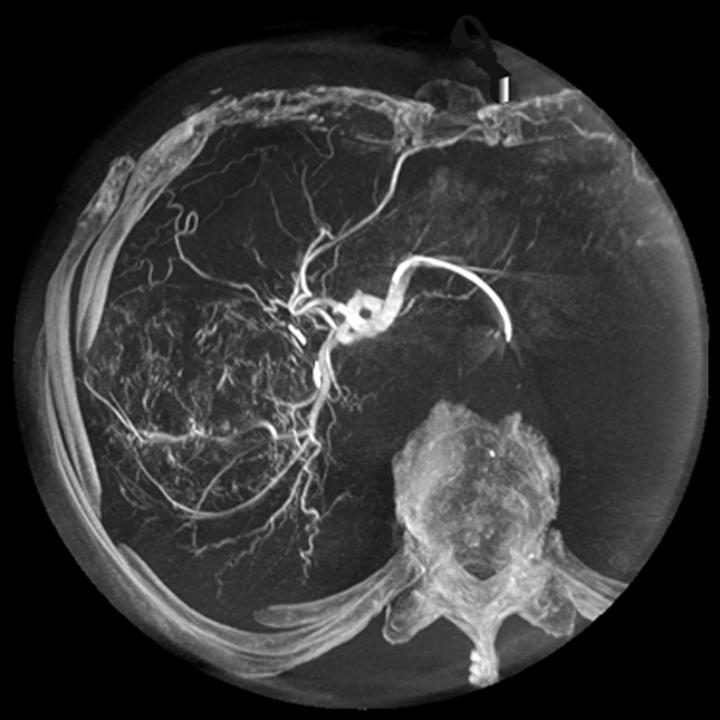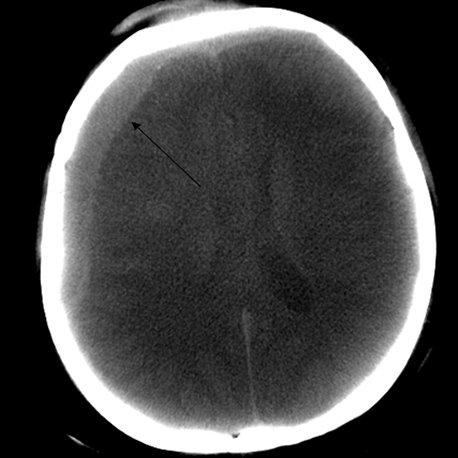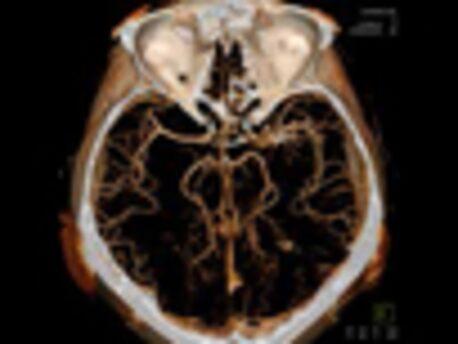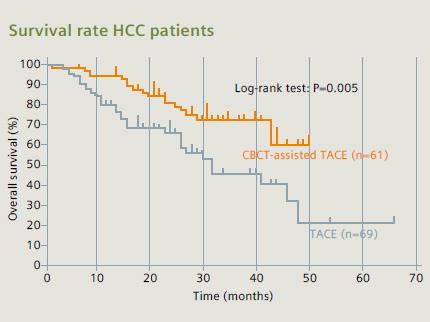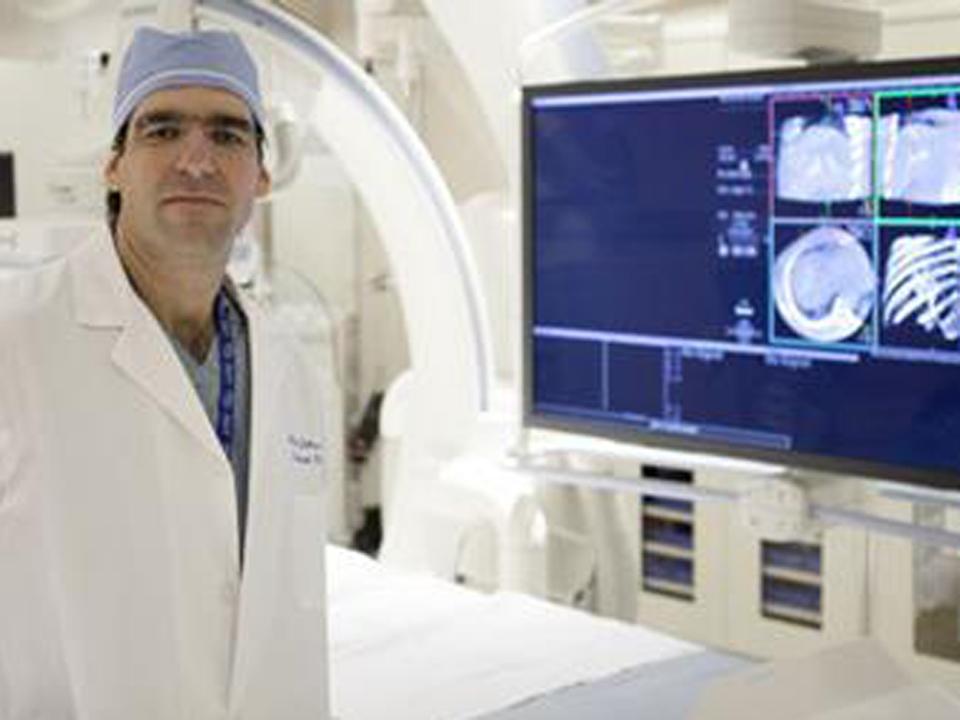If desired, it is also possible to acquire a smaller volume using collimation* in order to reduce dose and increase image quality.
*collimation on the longitudinal access.
What is the spatial resolution of syngo DynaCT and what slice thickness can be reconstructed?
The slice thickness that can be reconstructed depends on the volume of interest and the voxel size. The standard slice thickness is about 0.5 mm and there are additional reconstruction options that allow creation of lower slice thickness. The spatial resolution achieved with syngo DynaCT is about 0.22 mm. In addition, with syngo DynaCT Micro, a special protocol is available that provides high resolution 3D imaging, boosting the level of detail by using each detector pixel. With syngo DynaCT Micro an even higher spatial resolution of about 0.14 mm can be achieved.
Does syngo DynaCT offer a dedicated body protocol?
Yes, syngo DynaCT offers a dedicated body protocol, about 400 projections are acquired in less than 6 seconds*. Due to its fast rotation this protocol reduces motion artefacts providing excellent image quality. High resolution results (512 matrix) are available at tableside in less than 15 seconds*. In addition there is a dedicated syngo DynaCT protocol with reduced dose and shorter acquisition time for dose-sensitive applications.
*Mentioned values are for Artis with PURE and may change depending on system hardware and specific protocol used.
Does syngo DynaCT offer a dedicated neuro protocol?
Yes, there are several syngo DynaCT protocols that can be useful for interventional neuroradiology procedures.
The standard dedicated neuro protocol acquires about 500 projections in 20 seconds. High resolution results (512 matrix) are available at tableside in about 30 seconds*.
There are also protocols for reconstructing information of subtracted scans enabling the easy visualization of vessels in relation to devices such as stents or coil packages and a special protocol for stent follow-up using an intravenous injection.
In addition, with syngo DynaCT SMART (Streak Metal Artifact Reduction Technique) a special reconstruction is included for reducing metal artifacts in the resulting images, which increases the diagnostic confidence and the chance to visualize complications such as bleeds close to metallic objects.
* Mentioned values are for Artis with PURE and may change depending on system hardware and specific protocol used.
